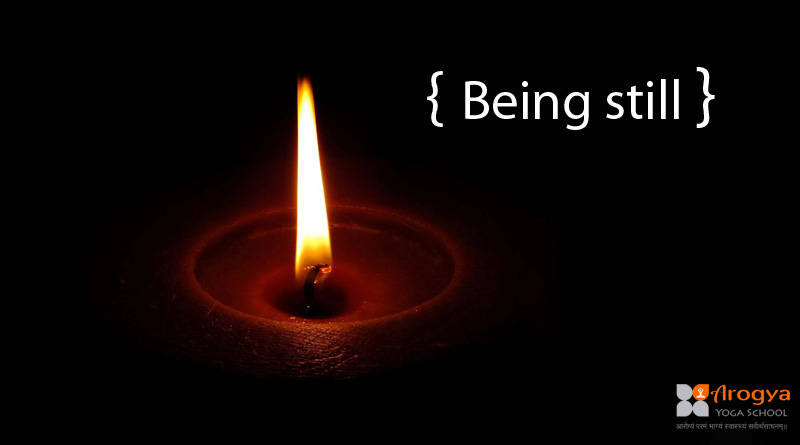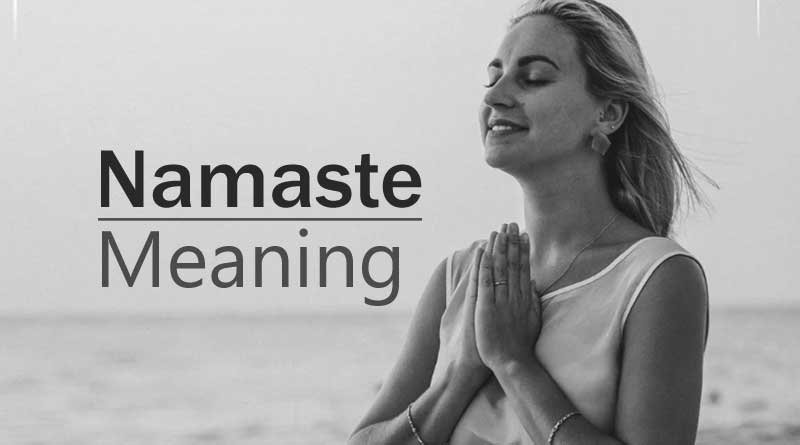Being still: One should become aware of the integration of body and mind. It should be remembered, however, that in general the mind rules the body. The mind moves first, and then the body follows. So your body language is totally dependent on your mental function. Try to raise your arm without first thinking about it. It cannot be done. In order to raise the arm you must first think “Arm, raise” and then send message through the nervous system from the brain to the arm. The arm will not move until the mind tells it to do so.
Furthermore, just as the mind sends messages to the body, the body is continually sending messages to the mind. In order to learn to be still one must first quiet the chatter coming from the body. This begins by learning the art of sitting. By developing a steady, comfortable position you free yourself from the distractions of the body and are able to attend to the mind. For if your body is not steady your mind cannot be still; if you put your body into a uncomfortable position it will become a constant source of distraction. In addition, if you sit in a certain position for a week and then change to another position the next week, your mental attitude will change as well. So choosing a position in which you can be still is very important.
The Bible talks about the importance of stillness: ‘be still, know that I am God’ (Psalm 46:10) If you learn this, then godly part in you will reveal itself. But for that godly part to be revealed without being still is not possible. So you should direct your voluntary and conscious effort to learning how to be still. If you just learn this, there will be no problem. In the beginning this means not moving at all. Later, once you learn what stillness is, you will be able to move the body, to act and live in the world, yet remain still. Calmness, stillness and a one pointed mind are identical; when this realized, it becomes possible to create them at all times. In other words, true stillness does not merely mean the absence of movement. It means equanimity and then performing your actions responsibly; it means attending effortlessly to your duties without being unduly affected by external circumstances.
To achieve this goal requires, first of all, self discipline. Whereas all the activities of animals are governed by nature, that is not the case with human beings. Human actions are governed by human desires, and these can be controlled only through self discipline.
Many people are afraid of the word discipline, for discipline when imposed by others is definitely frightening. But self accepted discipline helps the body healthy and the mind sound. Discipline really means regulating habits and habits are the basis of human character. You spend your whole life identifying with your personality, with your character. But who built? God? Nature? No. your own habits have woven a character for you, and their pattern makes up your personality. Your habits are deep rooted in motivation. You can strengthen these habits or you can change them.
If you really want to change and understand how habits are formed, then you will come to know that there are simple practices for doing this. With time, and with help of these laws, you can systematically bring about that inner transformation which is called samyama in the ancient texts. You cannot change your face or other external forms and shapes, but you can completely transform your internal states. Today you might condemn yourself and feel bad about yourself because of your habits, but tomorrow you can completely transform yourself and come in touch with your inner potentials for creativity, happiness and truth. Self discipline can be achieved only through the conscious directing of your will. Will is a very powerful tool for making you successful and will power is created by a one pointed and concentrated mind. The more your mind is dissipated, the more willpower weakens. It is not easy to control the totality of the mind, for the mind is vast. There is only one thing that is vast than the mind and that is the center of consciousness. But the portion of the mind which you use in your daily life can be brought under control very easily if you learn and practice a systematic approach.
The first thing to learn is regularity, or consisting in your practice. To do this you should form the habit of sitting quietly once or twice every day. For learning to be still it is important to find a comfortable and steady pose. Steadiness comes when you keep your head, neck and trunk in a straight line. For a few days this might create a little bit of uneasiness, but gradual and gentle practice will help you in sitting steadily and comfortably. Again, overdoing this is not at all recommended. It is better to sit correctly for five minutes twice a day than to sit once a week for an hour.
Making the body still and then making the flow of the breath serene and deep will help in relaxing the nervous system and releasing the tension from the set of muscles that is governed by the autonomic nervous system. By this practice you will reap many benefits: blood pressure will be lowered; the heart, liver and digestive organs will function more effectively. You will have less tension, more strength and energy. One final reminder regarding regularity is that you should choose a specific time and consistently use that time to practice sitting. The best time is either early in the morning or in the evening. However, any time is fine as long as you will not be bothered by other duties, interruptions or distractions.
The second point to understand and observe in learning to be still is that it is necessary to cultivate patience. You have to start accepting yourself. You should observe your capacity and go slowly. Patience is a great sign of virtue. Being patient means, being observant. Once you learn to be patient you will not condemn yourself for problems with your thinking process. One has to learn to appreciate and admire that part of them which is helping them and leading them.
The first step in developing stillness is making it into a daily habit; the second is being patient with oneself and then third is practising constant observation.


